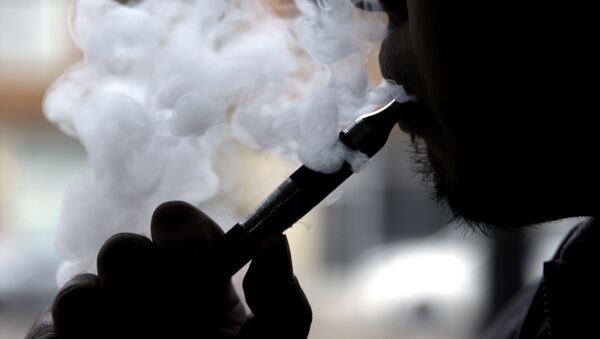The researchers, who are presenting their study Monday at the 256th National Meeting & Exposition of the American Chemical Society (ACS), collected saliva samples from from five e-cigarette users before and after a 15-minute vaping session in order to analyze the samples for chemicals known to mutilate DNA. To perform their analysis, the researchers used a mass spectrometry method that was developed to assess DNA damage caused by alcohol consumption.
The researchers found that three known DNA-harming compounds, namely formaldehyde, acrolein and methylglyoxal, were present in the volunteers' saliva after a vaping session. In addition, four out of the five users showed a type of DNA damage, called a DNA adduct, linked to acrolein exposure. A DNA adduct is a section of DNA bound to a cancer-causing chemical that indicates the formation of cancerous cells. In this case, the DNA adduct occurred when acrolein reacted with DNA in the mouth.
"E-cigarettes are a popular trend, but the long-term health effects are unknown," says Romel Dator, one of the study's researchers, Medical Xpress reported Monday. "We want to characterize the chemicals that vapers are exposed to, as well as any DNA damage they may cause."
E-cigarettes, which are battery-operated devices used to inhale an aerosol, usually containing nicotine, were first introduced to the market in 2004. They are offered in various flavors, including fruit, chocolate and candy, and are popular among young people.
A 2016 report by the US Surgeon General found that 13.5 percent of middle school students, 37.7 percent of high school students and 35.8 percent of young adults (18 to 24 years of age) have used e-cigarettes. On the other hand, only 15.4 percent of older adults (25 and older) have used e-cigarettes.
"It's clear that more carcinogens arise from the combustion of tobacco in regular cigarettes than from the vapor of e-cigarettes," says Silvia Balbo, the project's lead investigator, who works at the Masonic Cancer Center at the University of Minnesota.
"However, we don't really know the impact of inhaling the combination of compounds produced by this device. Just because the threats are different doesn't mean that e-cigarettes are completely safe."
According to Medical Xpress, the researchers plan to conduct a larger study involving more e-cigarette users and a control group. They also want to determine how DNA adducts differ between e-cigarette users and those who smoke regular cigarettes.
"Comparing e-cigarettes and tobacco cigarettes is really like comparing apples and oranges. The exposures are completely different," Balbo said. "We still don't know exactly what these e-cigarette devices are doing and what kinds of effects they may have on health, but our findings suggest that a closer look is warranted."



